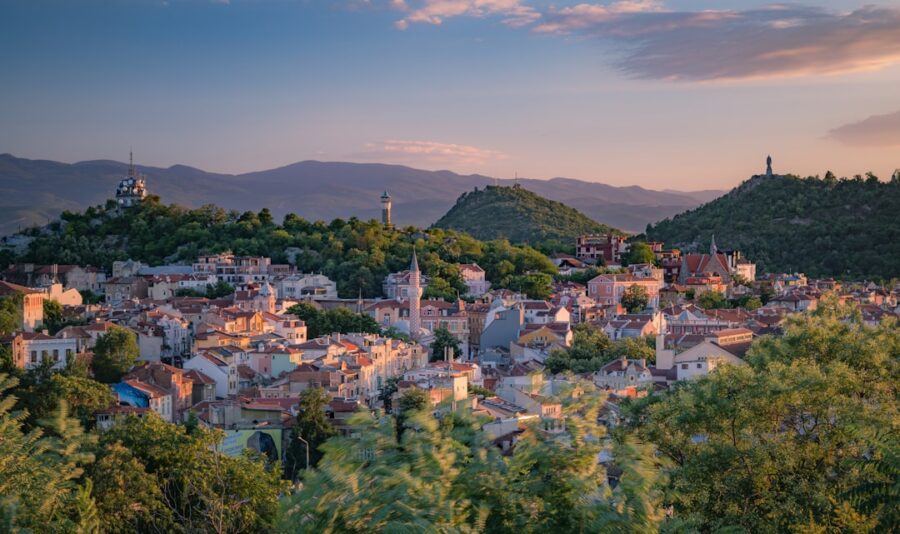Bulgaria, a land steeped in millennia of captivating history, offers a tapestry woven with threads of ancient civilizations, imperial grandeur, and resilient spirit. From Thracian tombs whispering secrets of the past to medieval fortresses standing sentinel against time, the country is an open-air museum, each stone a testament to its rich and complex heritage. For any traveler seeking to truly understand the soul of this Balkan gem, exploring its historical sights Bulgaria has to offer is an absolute necessity. These are not just ruins; they are portals to bygone eras, offering profound insights into the cultures, beliefs, and struggles that have shaped Bulgaria into the nation it is today. Embark on a journey with us as we unveil ten must-see historical sights in Bulgaria that unequivocally define its past, providing a glimpse into the very essence of its enduring legacy.
The Timeless Echoes of Plovdiv: A City Carved by History
Plovdiv, often hailed as Europe’s oldest continuously inhabited city, is a living testament to the ebb and flow of civilizations. Its layers of history are not confined to museums but are etched into its very cobblestones and ancient structures, making it an unparalleled destination for anyone interested in historical sights Bulgaria boasts. The city’s strategic location on the Maritsa River has made it a coveted prize for numerous empires, each leaving its indelible mark.
The Ancient Roman Theatre of Plovdiv
Perhaps the most iconic of Plovdiv’s historical treasures is the remarkably preserved Roman Theatre. Built in the 2nd century AD during the reign of Emperor Trajan, this magnificent amphitheater could once seat up to 6,000 spectators. Imagine the roar of the crowds, the drama of ancient performances – standing here, you can almost feel the echoes of the past. The theatre is not merely a ruin; it is still actively used today for concerts, operas, and festivals, bridging the gap between ancient spectacle and modern enjoyment. The intricate marble seating, the stage, and the surrounding ruins offer a tangible connection to Roman life and entertainment. When visiting, take time to climb to the upper tiers for a panoramic view of the city, a vista that has remained largely unchanged for centuries.
Practical Tip: Check the schedule for any performances happening during your visit. Attending an event here offers a truly immersive historical experience.
The Old Town of Plovdiv
Beyond the Roman Theatre, Plovdiv’s Old Town is a labyrinth of charming cobblestone streets, adorned with beautifully preserved Revival-era houses. These architectural masterpieces, with their colorful facades, ornate woodwork, and overhanging upper floors, showcase the wealth and artistic flair of Bulgarian merchants during the 18th and 19th centuries. Each house tells a story, many now serving as ethnographic museums, art galleries, or boutique hotels. Wandering through these narrow alleys is like stepping back in time. Don’t miss the Ethnographic Museum, housed in the stunning Kuyumdzhioglu House, which offers a comprehensive look at traditional Bulgarian life, crafts, and customs. The vibrant atmosphere, coupled with the stunning architecture, makes the Old Town a captivating exploration of Bulgarian identity.
Actionable Advice: Wear comfortable shoes for navigating the uneven cobblestones. Allow ample time to get lost and discover hidden courtyards and picturesque corners.
Ancient Stadium of Philippopolis
Beneath the bustling modern pedestrian street of Knyaz Alexander I lies another significant Roman relic: the Ancient Stadium of Philippopolis. Partially excavated and visible today, this impressive structure once hosted athletic games and gladiatorial contests. The sheer scale of the stadium, capable of seating 30,000 spectators, is awe-inspiring. You can walk along the exposed sections, marveling at the engineering prowess of the Romans. The remaining seating tiers and the starting line offer a glimpse into the grandeur of ancient sporting events. It’s a powerful reminder that beneath the layers of modern life, a vibrant Roman city once thrived.
Insight: Look for the preserved section of the stadium that runs under the main pedestrian street. You can often see parts of it from above, giving you a sense of its true extent.
Veliko Tarnovo: The Majestic Capital of the Second Bulgarian Empire
Perched dramatically on the steep banks of the Yantra River, Veliko Tarnovo evokes the grandeur and power of medieval Bulgaria. As the capital of the Second Bulgarian Empire (12th-14th centuries), it was a center of political, economic, and cultural life, a period often considered the golden age of Bulgarian history. The city’s natural fortifications, combined with impressive architectural achievements, make it a quintessential example of a medieval stronghold and a must-see among historical sights Bulgaria offers.
Tsarevets Fortress
The undisputed crown jewel of Veliko Tarnovo is Tsarevets Fortress. This imposing citadel, once the seat of Bulgarian tsars, is a sprawling complex of defensive walls, towers, royal palaces, and churches. Dominating the skyline, Tsarevets is a powerful symbol of Bulgarian statehood and resilience. Exploring the fortress allows you to walk in the footsteps of medieval kings and knights. The reconstructed Patriarchal Cathedral, with its striking modern frescoes, stands at the highest point, offering breathtaking panoramic views of the city and the surrounding countryside. The sound and light show, “Sound and Light,” which narrates the history of Bulgaria through dramatic projections on the fortress walls, is a truly unforgettable experience.
Essential Tip: Allocate at least half a day to thoroughly explore Tsarevets. Wear sturdy shoes as there is a lot of walking and climbing involved.
Samovodska Charshia
Adjacent to Tsarevets, Samovodska Charshia is a beautifully reconstructed traditional street that captures the spirit of the Bulgarian Revival period. This charming street is lined with artisan workshops where you can witness traditional crafts being practiced, such as pottery, metalwork, and woodworking. It’s a perfect place to find authentic souvenirs and to experience the continuity of Bulgarian craftsmanship. The atmosphere is lively and inviting, with cafes and small restaurants offering local delicacies. It’s a delightful immersion into the cultural heritage that complements the grandiosity of Tsarevets.
Recommendation: Engage with the artisans. Many are happy to explain their craft and the history behind it.
The Rila Monastery: A Spiritual and Architectural Masterpiece
Nestled deep within the Rila Mountains, the Rila Monastery is more than just a religious site; it is a UNESCO World Heritage site and a profound symbol of Bulgarian national identity and spirituality. Founded in the 10th century by Saint John of Rila, the monastery has been a sanctuary of faith, learning, and art for over a millennium. Its stunning architecture, vibrant frescoes, and serene setting make it an essential stop for anyone exploring historical sights Bulgaria is renowned for.
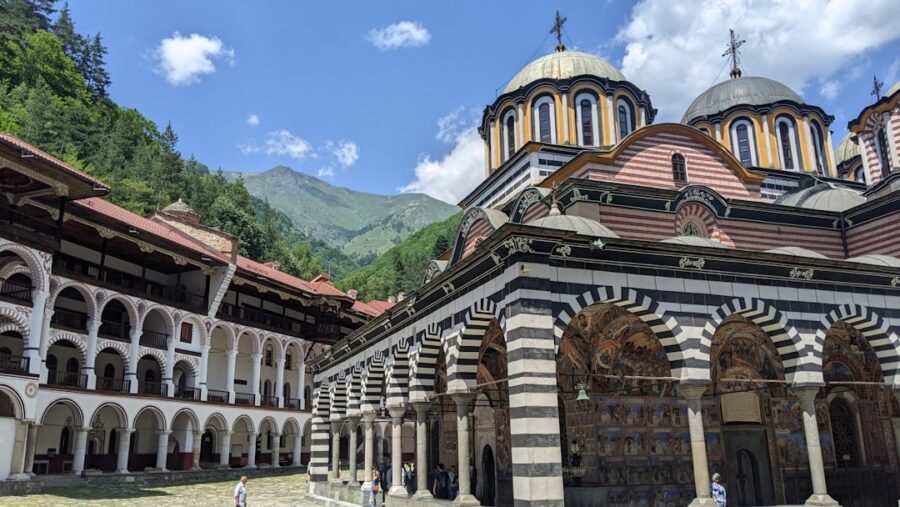
The Monastery Complex
The monastery’s architecture is a breathtaking fusion of Byzantine, Bulgarian, and Ottoman influences. The iconic Hrelyo’s Tower, the oldest surviving structure, stands as a testament to medieval Bulgarian defensive architecture. The main church, with its striking black-and-white striped arches and richly decorated interior, is a masterpiece of Bulgarian Revival art. The monastery’s courtyard is a vibrant space, filled with arcades, residential buildings, and the central church, all adorned with incredibly detailed frescoes that depict biblical scenes, saints, and everyday life. These frescoes, created by some of Bulgaria’s most renowned 19th-century artists, are a visual feast, conveying profound religious narratives with remarkable artistic skill.
Practical Advice: Dress respectfully when visiting the monastery – shoulders and knees should be covered. Allow yourself time to soak in the peaceful atmosphere and admire the intricate details of the frescoes.
The Monastery Museum
Within the monastery complex, the museum houses an invaluable collection of religious artifacts, icons, manuscripts, and historical documents. The most prized exhibit is the Raphael Cross, an intricate wooden cross carved by the monk Raphael in the early 19th century. It features 104 religious scenes and over 600 miniatures, a testament to incredible patience and artistic devotion. The museum offers a deeper understanding of the monastery’s historical and spiritual significance, showcasing the enduring legacy of Bulgarian monasticism.
Must-See: Don’t miss the Raphael Cross. Its intricate detail is truly astonishing and represents a significant feat of craftsmanship.
Koprivshtitsa: A Living Museum of the Bulgarian Revival
Koprivshtitsa is a charming town that has preserved the architectural and cultural spirit of the Bulgarian National Revival period (18th-19th centuries) like few others. Every house is a museum, a meticulously restored example of the era’s distinctive style. Walking through Koprivshtitsa is like stepping onto a film set, where the past is not just remembered but actively lived. It’s a vital piece of the puzzle when exploring historical sights Bulgaria has to offer.
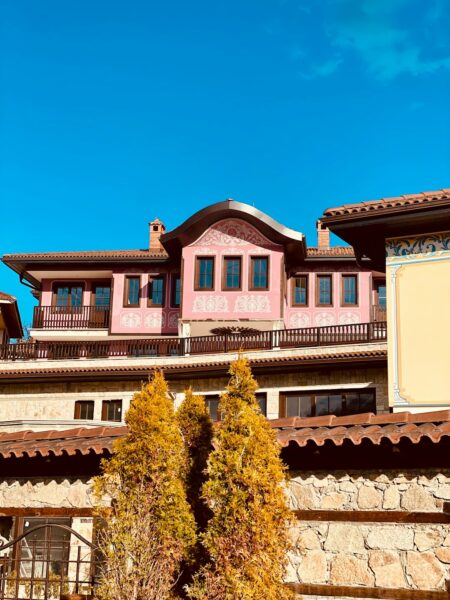
The Revival Houses
The town is famous for its colorful, well-preserved houses, often featuring overhanging upper floors, richly decorated facades, and spacious courtyards. Many of these houses, such as the Dimcho Debelyanov House, the Lyubena House, and the Georgi Benkovski House, are open to the public as house-museums. Each museum offers a unique glimpse into the life of prominent figures from the Bulgarian National Revival, showcasing their furniture, personal belongings, and historical documents. The distinctive architecture, with its emphasis on natural materials and vibrant colors, reflects the prosperity and burgeoning national identity of the period.
Tip for Exploration: Purchase a combined ticket that grants access to multiple house-museums. This is often more cost-effective and allows for a more comprehensive experience.
The Momina Banya Monument
This monument commemorates an important event during the April Uprising of 1876, a pivotal moment in Bulgaria’s struggle for independence from Ottoman rule. The monument stands near the site where a significant battle took place, reminding visitors of the sacrifices made. Koprivshtitsa played a crucial role in the uprising, and its historical significance is palpable throughout the town.
Historical Context: Understanding the significance of the April Uprising adds a layer of depth to your visit to Koprivshtitsa, highlighting its role in the fight for national liberation.

The Thracian Tombs of Kazanlak and the Valley of the Thracian Rulers
The Thracians, an ancient Indo-European people who inhabited the Balkan Peninsula, left behind a remarkable legacy of sophisticated art and architecture, most notably their elaborate tombs. The Kazanlak Tomb, a UNESCO World Heritage site, is a prime example, offering an unparalleled glimpse into the beliefs and artistry of this enigmatic civilization. Exploring these ancient burial sites is a profound encounter with Bulgaria’s earliest significant inhabitants and a vital part of understanding historical sights Bulgaria encompasses.
The Kazanlak Tomb
The Kazanlak Tomb, dating back to the 4th century BC, is renowned for its exceptionally well-preserved frescoes, which depict a Thracian couple in a ritualistic feast. The tomb’s circular chamber and corridor, adorned with these vibrant murals, are a masterpiece of ancient art. While the original tomb is protected and not accessible to the public, a faithful replica has been constructed nearby, allowing visitors to experience the tomb’s interior and its stunning artwork in full scale. The intricate details of the figures, their clothing, and the surrounding motifs provide invaluable insights into Thracian culture, religious practices, and artistic traditions.
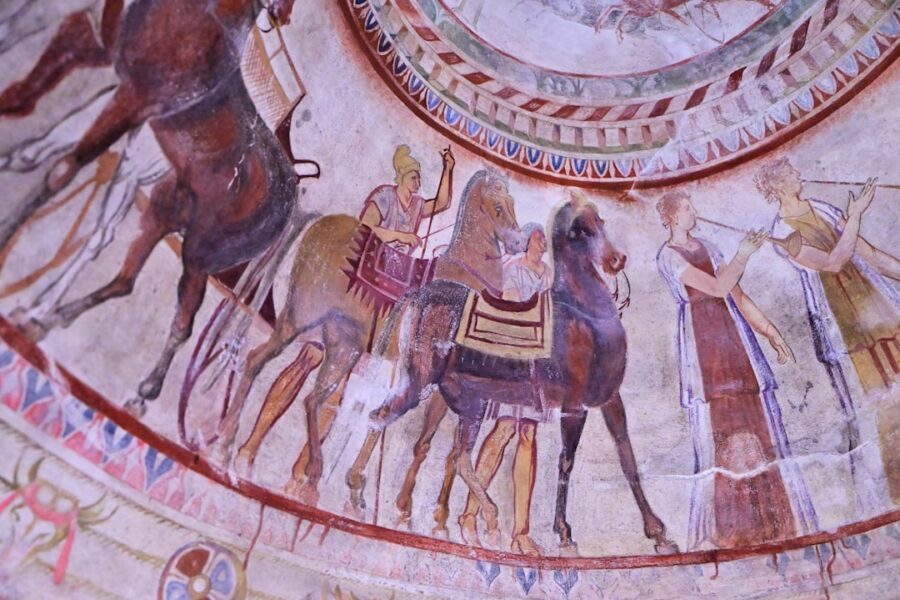

Important Note: The original tomb is extremely fragile. Visiting the replica is the only way to see the frescoes, and it’s a truly remarkable experience.
The Valley of the Thracian Rulers
The region surrounding Kazanlak is known as the Valley of the Thracian Rulers, dotted with numerous other Thracian burial mounds and tombs, many of which are still being discovered and excavated. Sites like the Tomb of Shipka, the Tomb of Goliama Kosmatka, and the Tomb of Shushmanets offer further evidence of the wealth and power of the Thracian elite. Each tomb, though varying in preservation, reveals different aspects of Thracian burial customs, social structures, and their connection to the afterlife. Visiting these sites, often set amidst rolling hills and picturesque landscapes, provides a broader context for understanding the Thracian civilization.
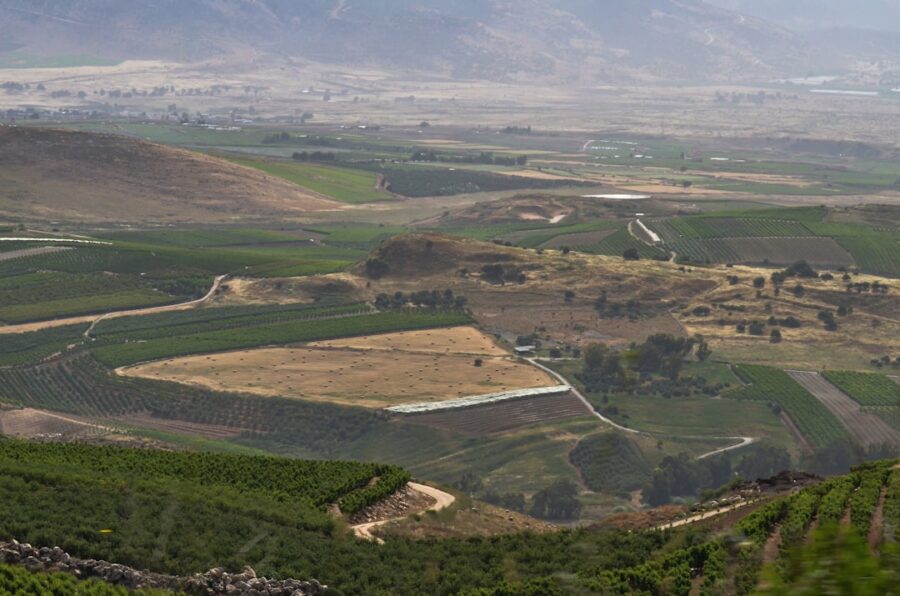
Planning Your Visit: Consider visiting the Iskra Museum in Kazanlak, which houses a significant collection of Thracian artifacts, including gold treasures, pottery, and weaponry, offering a comprehensive overview of the civilization.
The Ancient City of Perperikon
Perperikon, often referred to as the “Stone City,” is a truly extraordinary archaeological complex perched atop a rocky hill in the Eastern Rhodope Mountains. This ancient Thracian religious center, later inhabited by Romans, Byzantines, and Bulgarians, boasts a history spanning over 8,000 years. Its dramatic setting and the sheer scale of its rock-hewn structures make it one of the most captivating and significant historical sights Bulgaria has to offer.
The Rock-Hewn Sanctuary and Citadel
The heart of Perperikon is its monumental rock-hewn sanctuary, where a massive altar and a throne were carved directly into the solid rock, believed to have been used for religious rituals and prophecies dedicated to Dionysus. The complex also includes a citadel, a palace complex, a basilica, and numerous dwellings, all carved into the mountainside. Exploring Perperikon is an adventure, requiring climbing and navigating through ancient pathways. The panoramic views from the summit are spectacular, offering a sense of the strategic importance and spiritual significance of this ancient site.
Practical Tip: Wear sturdy hiking boots as the terrain is uneven and rocky. Bring plenty of water, especially during warmer months, as there are limited facilities on the site itself.
The Historical Layers
Perperikon’s long history is evident in its diverse architectural styles and layers of occupation. Evidence of early human settlements, Thracian religious practices, Roman engineering, Byzantine fortifications, and medieval Bulgarian structures are all present. This layering makes Perperikon a fascinating case study for archaeologists and historians, illustrating the continuous human activity and cultural exchange in the region over millennia.
Research Before You Go: Familiarize yourself with the history of Perperikon to fully appreciate the significance of the different structures and their historical context.
The Bachkovo Monastery: A Millennia-Old Spiritual Hub
The Bachkovo Monastery, the second-largest monastery in Bulgaria, is another UNESCO World Heritage site that stands as a testament to Bulgaria’s rich religious and cultural heritage. Founded in 1083, it has a unique blend of Bulgarian, Georgian, and Byzantine influences, reflecting its historical connections and the diverse spiritual currents that have shaped it. Its imposing architecture and vibrant frescoes make it a cornerstone of historical sights Bulgaria presents.
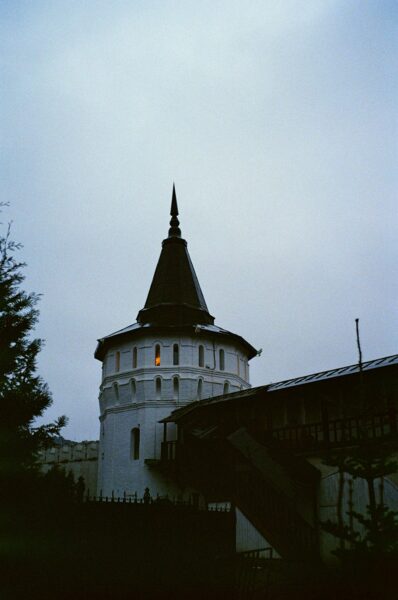
The Main Church and Ossuary
The monastery’s main church, dedicated to the Virgin Mary, is a magnificent example of medieval Bulgarian architecture. Its exterior is adorned with beautiful frescoes, and the interior is equally impressive, featuring intricate wood carvings and religious icons. Adjacent to the main church is the ossuary, a unique two-story building that houses the bones of monks and soldiers. The ossuary’s frescoes, depicting the Last Judgment, are particularly striking and offer a powerful visual representation of medieval religious beliefs.
Historical Significance: The monastery holds a miraculous icon of the Virgin Mary, which is believed to have healing powers, drawing pilgrims from far and wide.
The Monastery Complex and Surroundings
The monastery complex is a self-contained world, with residential buildings, a refectory, and a picturesque courtyard. The surrounding landscape of the Bachkovo Monastery is equally enchanting, nestled in a valley of the Rhodope Mountains, offering a serene and spiritual atmosphere. Exploring the monastery and its surroundings provides a sense of peace and a deeper connection to Bulgaria’s spiritual past.
Visitor Tip: The monastery is an active place of worship. Be mindful of the services and dress code when visiting.
The Roman City of Serdica (Sofia)
Beneath the modern streets of Bulgaria’s capital, Sofia, lies the ancient Roman city of Serdica. The remnants of this once-thriving Roman metropolis are scattered throughout the city center, offering a tangible link to Bulgaria’s Roman past. The most significant discoveries are now showcased in the Serdica Archaeological Complex, a fascinating site that allows visitors to walk through the ruins of ancient streets, buildings, and public spaces. This underground museum is a crucial part of understanding the historical layers of historical sights Bulgaria’s capital holds.
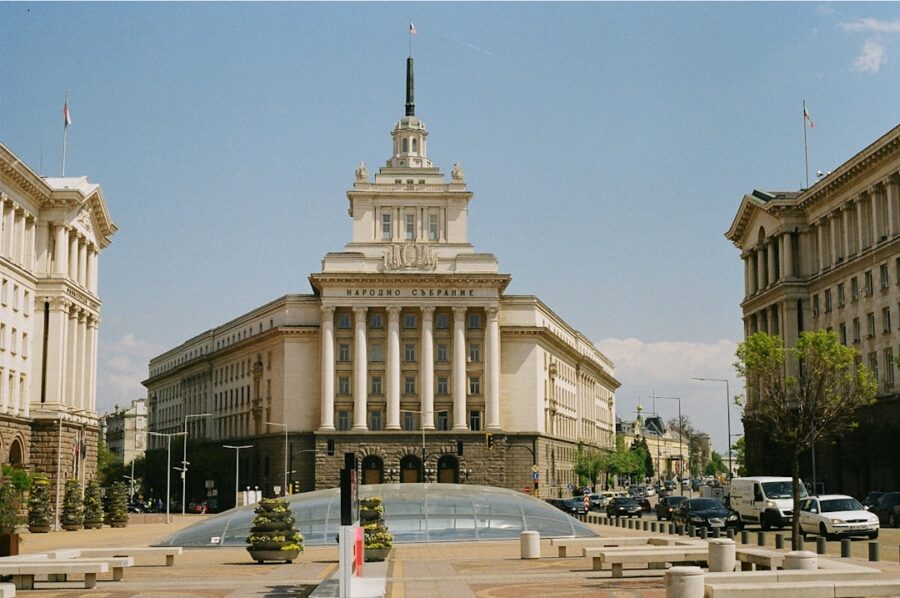
The Serdica Archaeological Complex
This complex, located in the heart of Sofia, beneath the Presidency building, reveals a significant portion of the ancient city. You can wander through the remains of Roman streets, public squares, and parts of the city walls and gates. The preserved foundations of churches and residential buildings offer insights into the urban planning and daily life of Serdica. The complex is exceptionally well-presented, with informative displays and excellent lighting, making it an accessible and engaging historical experience.
Actionable Advice: The Serdica Archaeological Complex is easily accessible and a great starting point for exploring Sofia’s ancient history. Combine it with a visit to the nearby Rotunda of St. George.
The Rotunda of St. George
One of the oldest buildings in Sofia, the Rotunda of St. George, is a small, circular brick church dating back to the 4th century AD, built by the Romans. It has survived centuries of turmoil, serving as a Roman temple, a Christian church, and even a mosque during Ottoman rule. The interior walls are adorned with medieval frescoes, offering a glimpse into the religious art of different periods. Its resilience and continuous use make it a powerful symbol of Sofia’s enduring history.
Historical Context: The Rotunda is one of the few surviving structures from the Roman period in Sofia and is considered the oldest building in the city.
The Ancient City of Nessebar
Nessebar, situated on a picturesque peninsula on the Black Sea coast, is a UNESCO World Heritage site renowned for its rich history, spanning over 3,000 years. Originally a Thracian settlement, it later became a prosperous Greek colony, a Roman port, and a medieval Bulgarian and Byzantine stronghold, each leaving its architectural and cultural imprint. Its unique charm lies in its combination of ancient ruins, medieval churches, and charming cobbled streets, making it a standout among historical sights Bulgaria offers on its coastline.
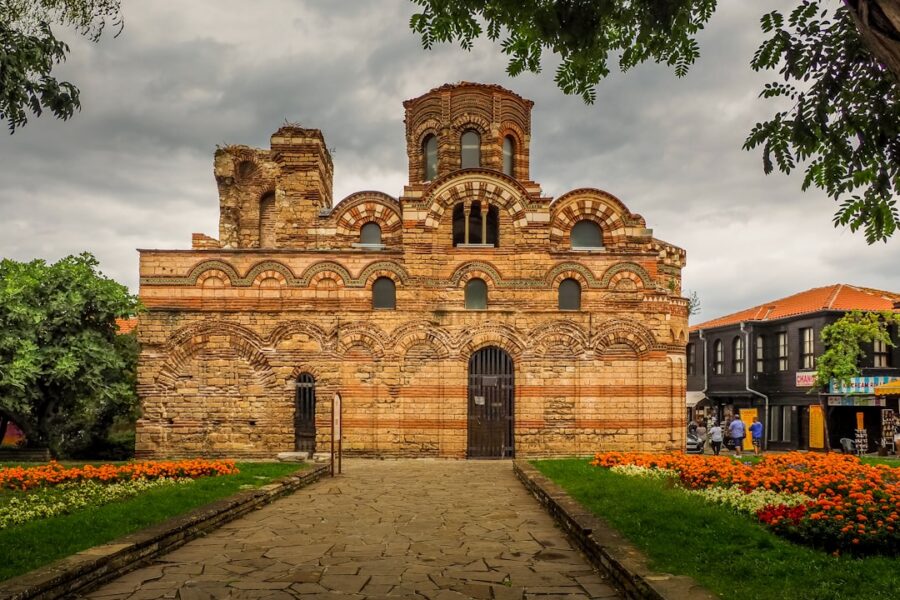
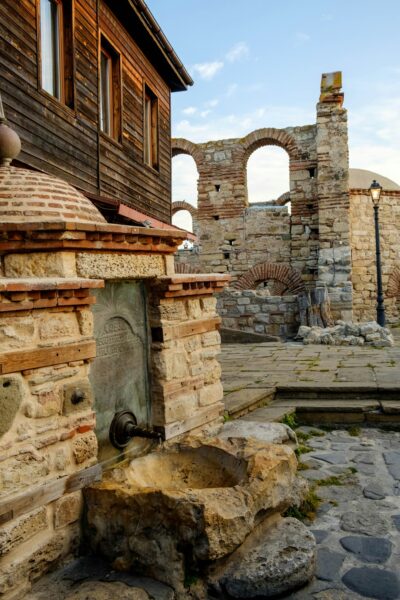
The Old Town and Its Churches
Nessebar’s Old Town is a captivating maze of narrow, winding streets lined with well-preserved houses from the Bulgarian National Revival period. However, the true historical marvels are the numerous medieval churches scattered throughout the peninsula. Churches like the Church of St. Stephen (New Metropolia) with its vibrant frescoes, the Church of St. John the Baptist, and the Church of the Holy Archangels Michael and Gabriel showcase a variety of architectural styles and artistic achievements from the medieval era. These churches are not just religious sites but also valuable historical artifacts, reflecting periods of artistic innovation and religious devotion.
Traveler’s Tip: Dedicate a full day to explore Nessebar’s Old Town. Wander through its streets, visit the various churches, and enjoy the stunning sea views.
The Ancient Thracian and Greek Ruins
While the medieval churches are prominent, Nessebar also holds remnants of its earlier Thracian and Greek past. You can find remnants of the ancient city walls, the agora (marketplace), and even parts of the acropolis. These archaeological traces, though less preserved than the churches, offer a glimpse into the city’s ancient origins and its importance as a trading hub.
Historical Insight: Nessebar was once known as Mesembria, a significant Greek city that played a crucial role in the region’s history.
The Belogradchik Rocks and Kaleto Fortress
The Belogradchik Rocks are a spectacular natural phenomenon, a collection of dramatic sandstone and limestone rock formations that have been shaped by millions of years of erosion. However, their historical significance is amplified by the presence of the Kaleto Fortress, ingeniously built into and among these natural wonders. This unique combination of natural beauty and human ingenuity makes them a compelling destination for exploring historical sights Bulgaria has in its northwestern corner.
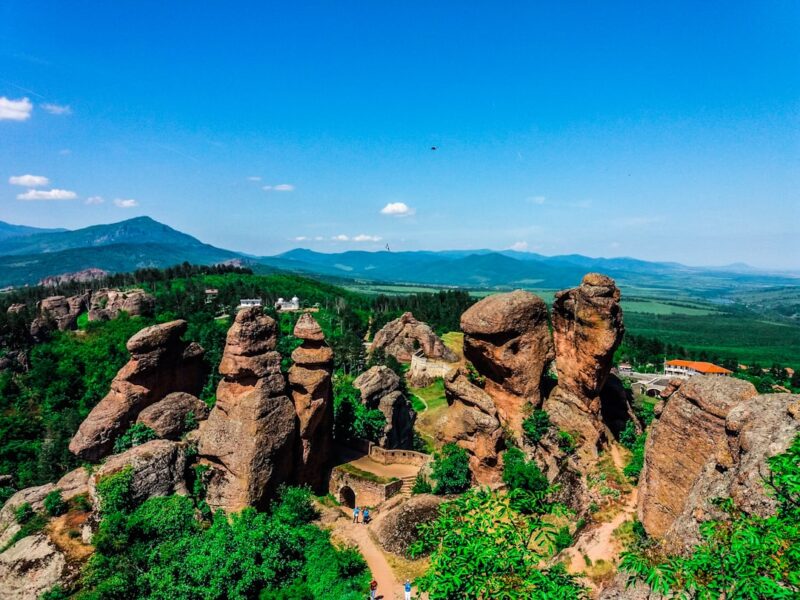
Kaleto Fortress
The Kaleto Fortress, meaning “The Castle,” is an ancient fortification that has been adapted and used by various rulers throughout history, including the Romans, Byzantines, Bulgarians, and Ottomans. The fortress is strategically positioned to take advantage of the natural defenses provided by the surrounding rock formations. Exploring Kaleto involves climbing through its ramparts, towers, and gateways, offering breathtaking views of the Belogradchik Rocks and the surrounding landscape. The sheer scale and ingenuity of its construction, blending seamlessly with the natural environment, are truly remarkable.


Practical Advice: Wear appropriate footwear for climbing and uneven terrain. The views from the fortress are spectacular, so be sure to bring a camera.
The Belogradchik Rocks
While the fortress is the man-made historical element, the Belogradchik Rocks themselves are a geological marvel that has played a role in the region’s history, often serving as natural boundaries and defensive points. The most famous formations include the “Adam and Eve,” the “Shepherd Boy,” and the “Madonna.” These natural sculptures have inspired local legends and folklore, adding another layer to their historical and cultural significance.
Experiential Tip: Consider taking a guided tour to learn more about the geology, history, and local legends associated with the Belogradchik Rocks and Kaleto Fortress.
Conclusion: A Tapestry of Time Unfolds
These ten historical sights in Bulgaria represent just a fraction of the country’s immense historical wealth. Each site, from the ancient Roman Theatre of Plovdiv to the dramatic Belogradchik Rocks, offers a unique window into the past, revealing the layers of civilizations that have shaped this resilient and captivating nation. Bulgaria’s history is not a static collection of facts but a living narrative, accessible through its remarkable heritage sites. Whether you are a history enthusiast, an archaeology buff, or simply a curious traveler, exploring these destinations will undoubtedly leave you with a profound appreciation for Bulgaria’s enduring legacy and its pivotal role in the grand tapestry of European history. So, pack your bags, open your mind, and prepare to be transported through time as you discover the soul of Bulgaria, one historical sight at a time.

